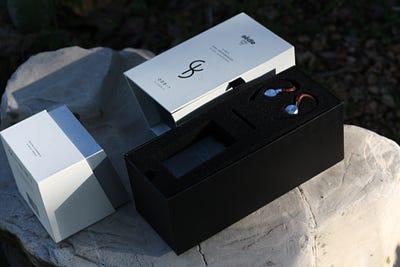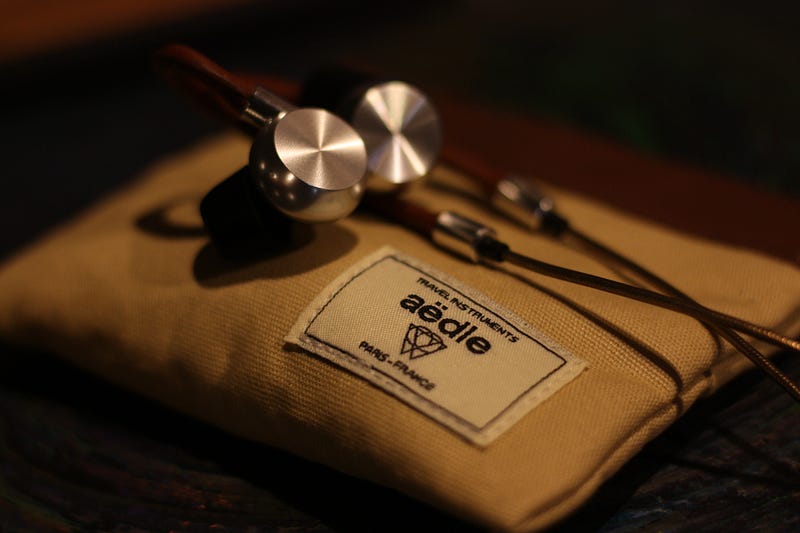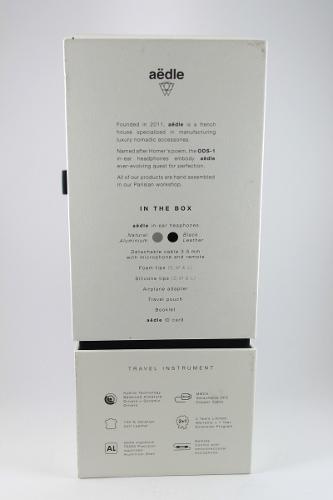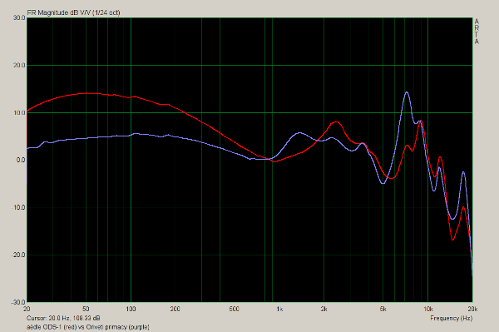Aedle ODS-1 Review: Luxury Brand Meets Audiophile Standards
Aedle is a French mobile-audio company whose focus is high-performance luxury IEMs and headphones. They’ve really taken me by surprise, as I’ve seen an exceptional level of professionalism from them up until this point, more so than I’ve seen from many other companies that are well established. Even their products are like a breath of fresh air —their unique styling combined with their fully custom-tuned sound makes it hard to ignore them. The ODS-1, the hybrid IEM that I am reviewing today, is their first go at the in-ear market. Can they compete at their luxury price?
You can find the ODS-1 for sale
here, on Aedle’s official website, for $360.
Disclaimer: This unit was provided to me free of charge for review purposes. I am not affiliated with Aedle beyond this review. These words reflect my true, unaltered, opinion about the product.
Preference and Bias: Before reading a review, it is worth mentioning that there is no way for a reviewer to objectively pass judgment on the enjoy-ability of a product: such a thing is inherently subjective. Therefore, I find it necessary for you to read and understand what I take a natural liking to and how that might affect my rating of a product.
My ideal sound signature would be an extended sub-bass with a leveled, but textured, mid-bass. The mids should be slightly less pronounced than the treble, but still ahead of the bass. I prefer a more bright upper range.
Source: The ODS-1 was powered like so:
Nexus 6P -> earphones
or
Hidizs AP100 3.5mm out -> FiiO A5 3.5mm out -> earphones
or
HiFiMAN MegaMini -> earphones
or
PC optical out -> HiFiMe SPDIF 9018 Sabre DAC 3.5mm out -> earphones
All music was served as MP3 @320Kbps or as FLAC.
Sound Signature
Initial Impressions:
The ODS-1 is not flat. The ODS-1 is not “natural”. The ODS-1 is decadent and warm, and pulls it off quite well. As someone who has always tilted towards enjoyed warmer IEMs, I find that I do quite like the thicker sound the ODS-1 provides. The bass is centered behind the lower-mids which are placed above the upper-mids and treble, which are fairly matched.
Treble: Songs used:
In One Ear,
Midnight City,
Outlands,
Satisfy
Treble is fairly tame, as the ODS-1 is a warm IEM. This doesn’t mean that it doesn’t have any extension, it is a hybrid-IEM after all. However its just that the treble isn’t a main concern of the sound-stage. Do I hear minute details? Yes, but they aren’t as pronounced as, say, the Pisces BA or the K3 Pro.
Mids: Songs used:
Flagpole Sitta,
Jacked Up,
I Am The Highway,
Dreams
Mids are pretty darn satisfying. A nice tonality mixed with good texturing and decay makes for a pleasant listening experience. Guitars and drums have a good weight to them and decent separation in the majority of songs. I have to say that the mids are my de-facto feature of the sound signature, everything just sounds so smooth.
Bass: Songs used:
Moth,
Gold Dust,
In For The Kill (Skream Remix),
War Pigs (Celldweller Remix)
Bass is my only concern. For an IEM of this price, especially one that’s a hybrid, the bass shouldn’t have any looseness issues like the ODS-1 does. Is it pronounced? No, but it still isn’t so subtle that I wouldn’t mention it. While using a higher-amperage setup has seemed to help a little bit, I still couldn’t get the ODS-1 to the place where I wanted it to be.
That aside, I do quite like the quantity of bass present. It isn’t so overpowering that normal songs sound muddy, but its strong enough to where my electronic songs sound nice and robust.
Strangely enough, I found the ODS-1’s bass to respond extremely well to the production style of The Glitch Mob. They are the single artist who’s songs exhibited no real bass-smudging even though they make copious use of it.
Packaging / Unboxing
Build
Construction Quality
I’ve only thought this about one other company, RHA, but every inch of Aedle’s products simply oozes quality. The driver housings are made from a well-polished metal. I’m fairly confident it’s stainless steel.
The housings are connected to the leather ear-guides via a rotating joint with 360 degrees of range. The rotation is smooth. It’s got a really well-tuned level of resistance.
The ear-guides are among the best I’ve used, and while they aren’t memory wire, I doubt you’ll actually want them to be once you put on the OSD-1. The stitched leather that covers it is durable and smooth. At the base of the ear-guides is a reflective metal cylinder that likely hosts the stress relief for the cable.
Speaking of the cable, the OSD-1 comes wired with a nice plastic cable. Though non-detachable, I don’t have any real long-term concerns on durability. The cable’s diameter is slightly above average, though I lack the appropriate tools to cite a specific number. The cable is composed of two layers: an inner nylon layer and an outer transparent plastic. This should be a very good combination in terms of longevity, as it has a high resistance to a lot of kinds of mechanical force. The cable terminates is a metal-housed 3.5mm jack.
Comfort
The ODS-1 is very comfortable. Despite the fact that it appears to have large driver housings I rarely “felt” it in my ears. During my extended listening sessions I had no comfort complaints.
Furthermore, the ear-guide is quite good. It fits me really well and kept the OSD-1 secured in my ears even during an intense BMX session.
Accessories
The ODS-1 comes with some pretty great accessories, and presentation is top notch. Inside the box you will find:
- 2x sets of foam eartips
- 3x sets of extra silicone eartips
- 1x soft carrying pouch
I really like the carrying pouch. It’s the best implementation of one I’ve seen yet. It is soft, compact, and cusiony. It even has a magnetic seal to keep the ODS-1 in and debris out.
Summary
The ODS-1 is a good first attempt from Aedle. While I certainly think the tuning could use some work, especially given the ODS-1’s less than wallet-friendly pricing, I can absolutely attest for the top-notch accessories and build-quality that Aedle infused into this IEM. So if you find form to supersede function, absolutely take a look at the ODS-1. However, if you aren’t too fond of very warm sound signatures, you’d be better off looking elsewhere.




















































